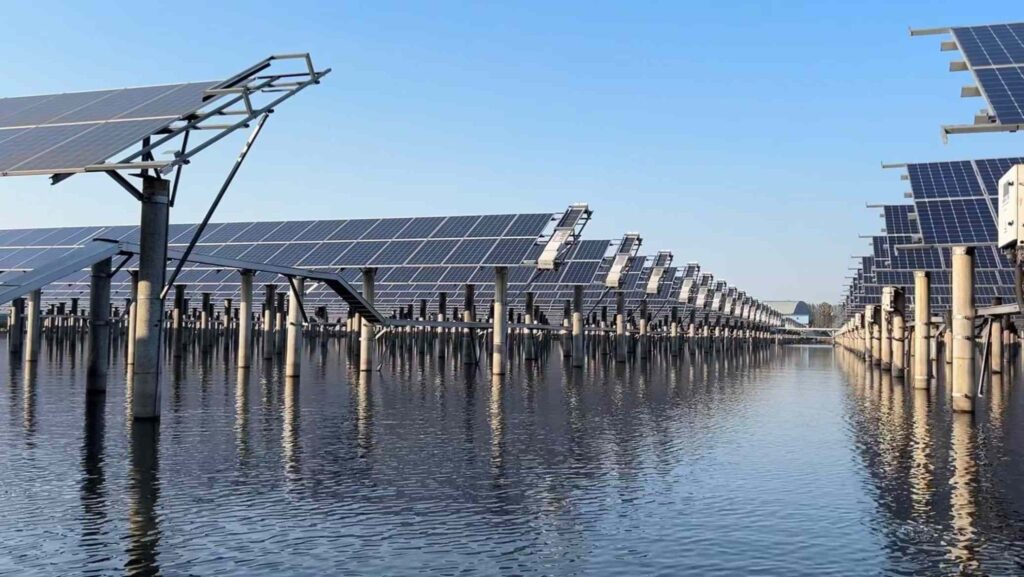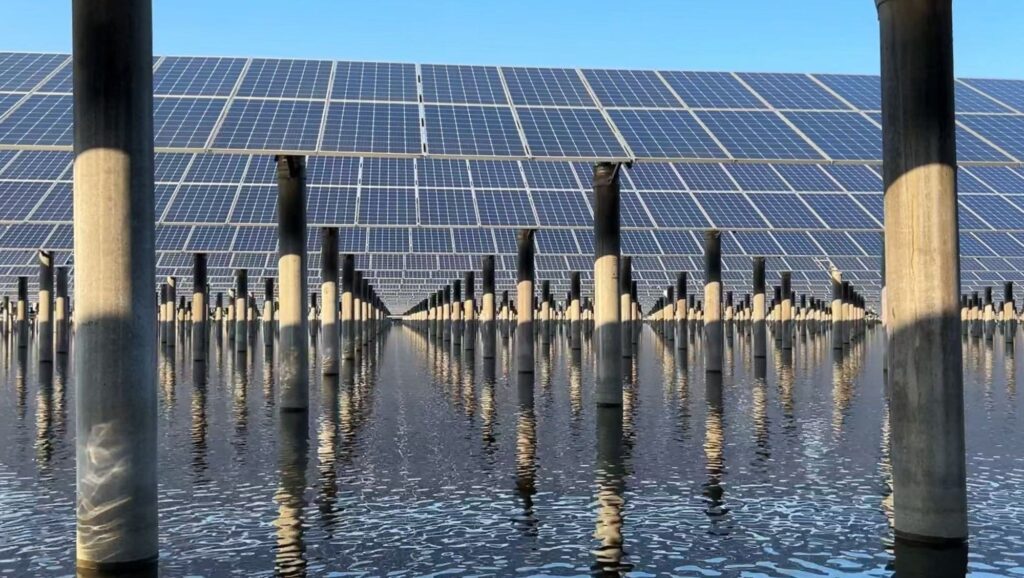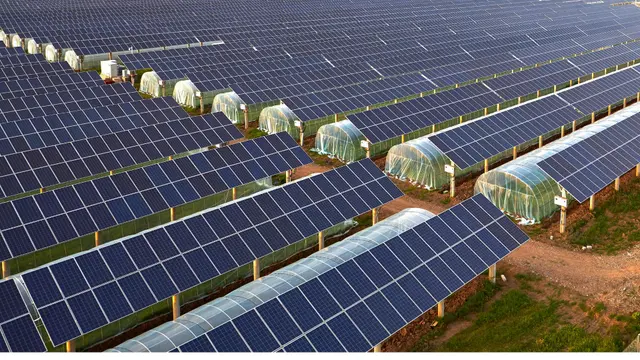I. PV Cleaning Pain Points and Industry Demands
With the explosive growth of global PV installations (China’s PV capacity exceeded 600GW by 2024), module maintenance efficiency has become a critical factor limiting power generation revenue. Traditional manual cleaning suffers from low efficiency (daily coverage < 2,000m²), safety hazards (high-altitude risks), and water waste (especially problematic in desert regions). In contrast, fully automated waterless cleaning robots, with their efficient, intelligent, and eco-friendly features, are becoming the preferred solution for large-scale ground-mounted plants, agrivoltaic, and fishery-integrated PV projects.
II. Solar Farm Cleaning Robot Advantages: Why Choose Automatic Solar Panel Cleaning system?
1. Efficiency Revolution: From “Passive Maintenance” to “Active Gain”
Cleaning Performance: Combines spiral nylon brushes (PA610 material) with high-speed motors (60-120 RPM) to achieve >99% single-pass cleaning rate and daily coverage of 1,600-3,000 meters, significantly improving module light transmittance.
Power Generation Boost: Studies show regular cleaning increases desert plant output by 10-65% (Reference: Application and Analysis of Intelligent PV Cleaning Robots in PV Plants).
Self-Cleaning Program: Automatically removes brush dust post-operation, extending brush life to 5+ years.
2. Safety and Cost Optimization: Disruptive Value of Full Automation
Zero Human Intervention: IP65 rating adapts to extreme temperatures (-30°C to 70°C), eliminating high-altitude risks and module microcracks (8% probability from manual cleaning).
Lifecycle Cost Savings: For a 20MW plant, robots save >¥500,000 annually in labor while waterless design eliminates water costs and treatment equipment.
3. Intelligent Management: From “Experience-Driven” to “Data-Driven”
Remote Control: Real-time monitoring via APP/cloud platform with automated O&M reports (cleaning frequency, alerts).
Adaptive Scheduling: Dynamically adjusts cleaning plans based on irradiance and dust forecasts (e.g., post-sandstorm emergency cleaning).
III. Solar Farm Cleaning Robot Applications: Perfect Fit for Agrivoltaic and Fishery-Integrated Solar
1. Agrivoltaic: Synergy Between Agriculture and Energy
Space Compatibility: 15-20cm thin profile navigates standard greenhouse frames without shading crops.
Humidity Control: Waterless cleaning prevents humidity spikes from traditional spraying (Reference: PV Greenhouses: Innovating Agrivoltaic Models).
Case Study: A Shandong agrivoltaic project saw 12% more annual power and 8% higher strawberry yields from optimized microclimate.
2. Fishery-Integrated PV: Reliable O&M for Water Scenarios
Anti-Corrosion Design: Aluminum alloy body with rust-proof coating suits high-humidity environments.
Obstacle Climbing: 22° slope capability matches floating PV arrays (98% coverage).
Eco-Friendly: Waterless operation avoids chemical contamination, meeting aquaculture standards (Reference: Optimal Cleaning Equipment for Fishery-Integrated PV).
IV. Solar Farm Cleaning Robot Technical Highlights: Breakthrough Innovations
| Technology Module | Innovation |
|---|---|
| Power System | 24V/16Ah lithium battery + 55W solar panel enables 72-hour off-grid operation for remote desert plants. |
| Navigation System | LiDAR + visual recognition locates module edges (<2cm error margin), preventing falls. |
| Self-Healing | Cloud AI diagnoses issues (motor overload, brush jams), resolving 80% remotely within 4 hours. |
V. Solar Farm Cleaning Robot Industry Trends: Robots Reshaping PV O&M
Per Patent Analysis of PV Cleaning Robot Development, the global market will exceed $12B by 2025, driven by three trends:
- Modular Design: Compatibility with bifacial, flexible modules.
- Energy Autonomy: Integrated micro-wind or environmental energy harvesting.
- AI Predictive Maintenance: Dust accumulation models optimize cleaning cycles.
The Automatic Solar Panel Cleaning Machine revolutionizes traditional cleaning through waterless intelligence and data-driven O&M, creating added value for hybrid projects. As global PV capacity grows (projected >3TW by 2030), such robots will become standard for cost and efficiency optimization, ushering in a new era of fully automated clean energy maintenance.


